#mori nana
Text
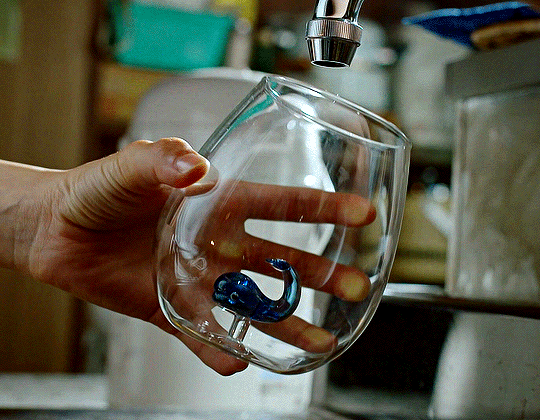


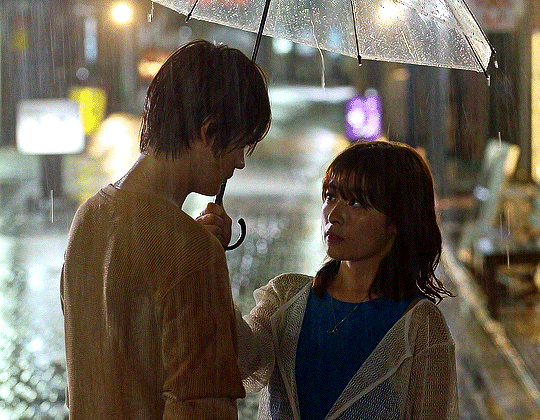


Manatsu no Cinderella (2023)
↳ Episode 1
#manatsu no cinderella#真夏のシンデレラ#mori nana#森七菜#mamiya shotaro#間宮祥太朗#nimura sawa#仁村紗和#mizukami koshi#okada kenshi#水上恒司#岡田健史#jdrama#jdramaedit#jdramasource#asiandramasource#.gif#not sure how im feeling about this so far#3643747 things happened in the first ep but i want to watch more
118 notes
·
View notes
Photo






Hell Girl (2019)
#hell girl#jigoku shoujo#hell girl 2019#enma ai#ai enma#netflixedit#jdramaedit#jdramasource#asiandramasource#tina tamashiro#mori nana#nimura sawa#fujita tom#my gif#mine mine
78 notes
·
View notes
Text




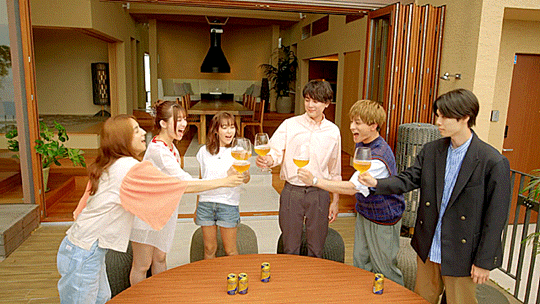
MANATSU NO CINDERELLA (2023) | episode 1
#manatsu no cinderella#midsummer cinderella#flashing tw#jdrama#userdramas#mamiya shotaro#mori nana#shirahama alan#hagiwara riku#nimura sawa#yoshikawa ai#userstorge#lextag#connorjesup#usermare#userginpotts#roserayne#jdramasource#asiandramasource#asiandramaedit#yes yes my most awaited show finally aired!!!#im just v happy to see mamiya in another drama anyway so let a girl unleash her inner excitement for a moment sksksksk#im really soaking in these cheerful good moments rn cuz u nvr know what to expect in those next episodes....#like i wasn't expecting any angst in the first ep but yeah it happened#hoping all the girlies will eventually find their happiness...#belleparkgif
69 notes
·
View notes
Text





natsumi aoi + 🐳 in manatsu no cinderella (2023)
#manatsu no cinderella#midsummer cinderella#mori nana#jdrama#jdramasource#asiandramasource#asiandramaedit#userdramas#lextag#userstorge#userginpotts#usermare#connorjesup#roserayne#belleparkgif
46 notes
·
View notes
Text
The Makanai: Cooking for the Maiko House

TV Shows/Dramas watched in 2023
The Makanai: Cooking for the Maiko House (2023, Japan)
Directors: Hirokazu Kore-eda, Hiroshi Okuyama, Takuma Sato & Megumi Tsuno
Writers: Hirokazu Kore-eda, Takuma Sato, Megumi Tsuno & Mami Sunada
Mini-review:
I love Hirokazu Kore-eda's style, and you can feel his hand throughout the nine episodes, even if he worked with more people. This show is such a lovely, soothing and relaxing experience. Nothing much happens (it's a classic slice of life story), but if you enjoy its vibes, it never gets boring. Sure, maybe it could have used a doses or two of drama, but at the same time I feel like that would have shattered the peaceful atmosphere it carefully builds from the first episode. I do wish the show would have delved into the many controversies and problems that surround the maiko/geiko industry, specially considering Kore-eda has strongly supported the #MeToo movement within the Japanese film world, but, once again, I get that something like that would have gone against the whole point of the show.
Anyway, I feel like I'm rambling here. The Makanai: Cooking for the Maiko House is quite lovely and as well acted and sensitively written/directed as one could expect from Hirokazu Kore-eda. Also, make sure to watch it on a full stomach, cause there's a lot of delicious-looking food here that will certainly make you go hungry.
#the makanai: cooking for the maiko house#makanai#cooking for the maiko house#kiyo in kyoto#kiyo in kyoto: from the maiko house#aiko koyama#nana mori#mori nana#natsuki deguchi#mayu matsuoka#ai hashimoto#takako tokiwa#keiko matsuzaka#aju makita#jyo kairi#arata iura#lily franky#yukiya kitamura#momoko fukuchi#kotoko wakayanagi#hiroshi okuyama#takuma sato#megumi tsuno#mami sunada#kotona minami#food#japan#japanese food#2023 tv shows and dramas#manga
138 notes
·
View notes
Video
youtube
April, She Will Come (March 2024)
Fujishiro Shun (Satoh Takeru) is a psychiatrist and works at a university hospital in Tokyo. He is engaged to Sakamoto Yayoi (Nagasawa Masami). One day in April, when he is about to marry Yayoi, he receives a letter from his first love Iyoda Haru (Mori Nana) from 10 years ago. Then his fiancé Yayoi suddenly disappears.
Poor guy can’t get over his first love from Rurouni Kenshin to First Love : Hatsukoi to this. Nevertheless, I’m here for it!
#april she will come#shigatsu ni nareba kanojo wa#satoh takeru#nagasawa masami#mori nana#japanese drama#japanese movie#japanese film#j movie#j drama#japan#2024 movie#2024 drama#rurouni kenshin#first love hatsukoi#masami nagasawa#nana mori#takeru satoh#asian film#asian drama
20 notes
·
View notes
Photo


88 notes
·
View notes
Text
I finished The Makanai: Cooking for the Maiko House this weekend, and I feel like I’m still laid out flat by what I watched. I’ve been so consumed with QLs lately, that jumping into a wholly different world of filmmaking was a touch of a shock. IT WAS ABSOLUTELY STUNNING, and I have to wholeheartedly RECOMMEND IT as a must-watch for 2023. LONG post!
First off: Koreeda Hirokazu. A MASTER director and screenwriter. His taking on the canon manga, Kiyo in Kyoto, had fans in anticipation for The Makanai to premiere on Netflix. My two favorite films of his are After Life (1998) and Like Father, Like Son (2013). He doesn’t shy away particularly from difficult stories about families and complicated relationships, and tends to cast familiar faces, especially Lily Franky. His latest film, Broker, has been on the awards circuit this season.
A couple of quick definitions and explanations before I move forward. This is a show about what us in the West called “geisha” culture in Kyoto. A maiko is an apprentice geisha, and geiko is the word for geisha in Kyoto’s dialect. A makanai means a person who cooks staff meals, say, at a restaurant or another kind of business where staffers get fed.
Kiyo in Kyoto is about the teenage protagonist, Kiyo, becoming the makanai of a maiko lodging residence in Kyoto, after she follows her best friend, Sumire (later known as Momohana), to Kyoto to apprentice as maiko. Sumire has a natural talent for this work, while Kiyo is a carefree, unburdened soul who isn’t committed to much in her young life. Kiyo is expelled from her maiko apprenticeship, but asks to become the makanai of the lodging house, and is able to stay in Kyoto, and close to Sumire, as Kiyo had promised to remain by Sumire’s side during their journey into apprenticeships. Both Kiyo and Sumire are from the same town in Aomori Prefecture, the northernmost prefecture on Honshu island, just south of Hokkaido. In Aomori, Kiyo lived with her grandmother, a local doting soul, and her grandmother’s kitchen is where Kiyo first found her passion for food and cooking. Finally, Sumire is in love with their mutual friend, Kenta, who is a high school baseball star in Aomori. It’s not clarified directly, but it’s apparent that Sumire’s love is unrequited, and indeed, it’s indirectly indicated that Kenta might be more inclined towards Kiyo. Kenta is shown sitting with Kiyo’s grandmother for many meals, including holiday meals, without explanation as to his own family.
So that’s already A LOT to manage, and still, Koreeda takes on more -- he takes on the unbelievable setting that is Kyoto and the Gion district, as well as flashbacks to winter-strewn Aomori; he takes on rivalries, regrets, sisterhood, and more among the women of geiko and maiko culture; he takes on the breathtaking theme of unrequited and resistant love, and he takes on the theme of complicated -- very complicated -- friendship, leveraging Kiyo as an unburdened foil and mirror to reflect on the complicated natures of the people around her.
First off, if you are at all inclined to be taken away simply by cinematography, you MUST WATCH THIS SHOW. I haven’t watched anything more beautiful in a VERY long time. This brings up for me the wonderful conversation that took place last month regarding the sense of space in QLs; in regards to the sense of space and how ma (that very intricate concept of place, time, and space) is incorporated into doramas -- I haven’t seen a show that does it better than The Makanai at the moment.
The way Koreeda captured seasons. The way he incorporated fashion -- what geikos and maikos wear during performances, on their off-time, during celebrations -- my GOD. The way he used COLOR. The way he used quiet, and sound, to lift up conversations outside in spectacular settings. The way he held shots. SUMPTUOUS. I was totally taken away.
Two shots that moved me: Kiyo in a sento bathhouse, humming to herself. (She’s later teased, without her knowing, by some of the maiko, for being like an old man, scrubbing and humming in the sento.)
Kiyo, Kenta, and Sumire, a flashback to Aomori, Kiyo and Kenta shoveling snow while Sumire built a snowman. And an immediate cut to Sumire watching Kiyo shovel snow in Kyoto. The quietness and the beauty gave me physical chills.
Kiyo as a free soul, moved by her passion for cooking and not much else, is leveraged so beautifully as a means of a young woman being in a place at a particular time, without carrying the emotional burden of existence that many of us place on our shoulders. She’s not the person who asks why something is happening in her life. She’s the one who’s feeding the people who are doing that asking unto themselves, and suffering either because of that inquiry, or suffering simply because of an inability to transcend what they’re going through. Kiyo is clearly a Zen-like foil -- even though she’s treated often as someone “with a screw loose,” as the geiko Momoko says to Sumire in the last episode. But I think Kiyo is far more in touch with the world than anyone else that surrounds her in the show. She’s the human embodiment of ma.
So, speaking of cooking: the reason why I picked up this show is because friends of mine recommended it to me as a cooking dorama, and certainly, a lot of news coverage in the West focuses much on the food of the show. Many of the Western articles, I think, miss many points about the show, and I think it’s in part for a lack of understanding about how food and cooking are so emotionally interwoven in unspoken aspects of Asian cultures. (A lot of commentary I’m reading just focuses on the dishes -- and the dishes are incredibly important, especially in how Kiyo interprets them from her Aomori taste, adjusting seasonings and techniques for the group of maiko she’s serving who hail from across Japan. But the dishes are not the only, or the most important, aspects to this show.)
Kiyo is often asked if she’s okay with being the makanai. She kept her promise to her friend, Sumire, Sumi-chan, to stay by Sumire’s side. Sumire would ideally like to keep Kiyo by her side -- if Kenta likes Kiyo, it’s better to keep Kiyo in Kyoto. But also: Sumire is primed to be the next best maiko and geiko in Gion, as Momoko predicts (Momoko is the star geiko of Gion), and Sumire will need an ally. Kiyo is Sumire’s ally -- and we’re not sure if Sumire has Kiyo’s best interests at hand.
But Kiyo insists that she’s okay, that she wants to be the makanai. Even at 16, she says, this may be the job I was intended to have. Kiyo radiates simplicity in a fantastic, uplifting way. I think Western critics are missing this. Western food media tends to absolutely glorify, many times in horrific and ignorant ways, dishes without the cultural context of the cooking, preparation, or history of those dishes. In other words, Western media erases the stories behind the cooking.
The Makanai is ALL ABOUT THE STORIES BEHIND THE COOKING. Kiyo is a makanai, and to Kiyo, that’s just fine. She doesn’t find it demeaning because she is not demeaned. She even seems surprised when she’s asked by a lodge okkasan if she’s okay with this job.
Food brings comfort, memories. It satisfies hunger, needs. Comfort, memories, hunger, needs -- these are HUGE, huge. Kiyo does that? That’s massive emotional work. She knows exactly what she’s doing.
So, what all does this show have? Absolutely EXQUISITE cinematography, and an unwinding, mature story focused on the journeys of two teenagers, with ambition, rivalry, regret, love (requited, unrequited, unresolved), and beyond unbelievable acting.
It’s an absolute CRIME that I can’t take screenshots (eff you, Netflix), but here’s two. Hashimoto Ai, as Momoko, is on the right of the first shot. Imagine her kimono as brilliant sky blue. The fashion choices and colors in this show were mindblowing. Hashimoto Ai, by the way -- I STAN. What a CONCRETE performance.


The reason why I chose the second shot, of Sumire in her daily lessons, is because the light from the windows reminds me of when I first started to learn how to meditate years and years ago. The Makanai is one of the most meditative shows that I’ve seen in years, and I CANNOT recommend it highly enough. Utterly breathtaking.
#the makanai cooking for the maiko house#mori nana#natsuki deguchi#hashimoto ai#tokiwa takako#hirokazu koreeda#after life#like father like son#broker#netflix#netflix japanese dramas
113 notes
·
View notes
Text

森七菜
#森七菜#もりなな#mori nana#nana mori#japanese girl#japan girl#japanese actress#asian girl#asian beauty#asian
10 notes
·
View notes
Text
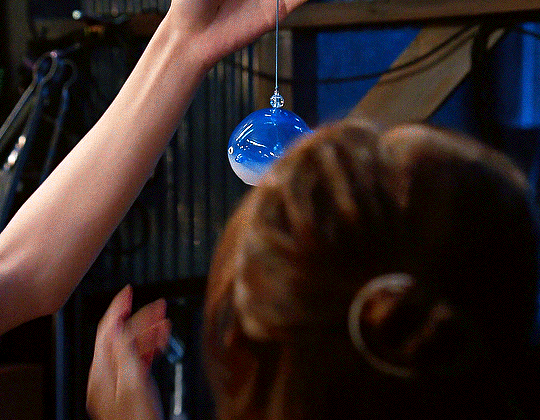


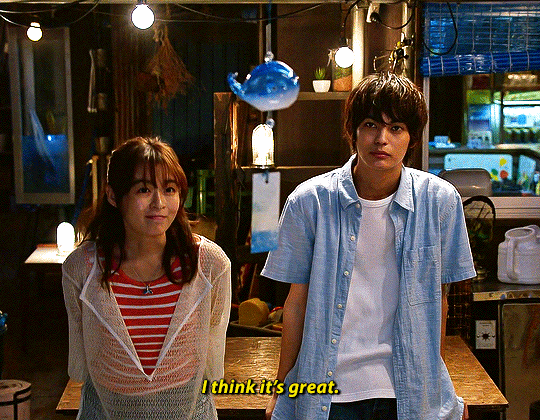
"It feels like summer when I hear the sound of the wind chime."
#kamio fuju#神尾楓珠#mori nana#森七菜#manatsu no cinderella#真夏のシンデレラ#jdrama#jdramaedit#jdramasource#.gif#can't believe all summer dramas are ending
36 notes
·
View notes
Photo



"The Makanai: Cooking for the Maiko House" leads Mori Nana and Deguchi Natsuki for NETFLIX TUDUM Japan (Sep. 2022)
#the makanai: cooking for the maiko house#the makanai#netflix#netflix tudum#netflixedit#jdramaedit#koreeda hirokazu#mori nana#deguchi natsuki#wocedit#thequeensofbeauty#femaledaily#userladiesblr#glamoroussource#dailywomen#pocedit#userbbelcher#chewieblog#flawlessbeautyqueens#dailywoc#breathtakingqueens#ladiesofcinema#photoshoot#tvactorsdaily#userwocs#luni#+#*e
81 notes
·
View notes
Text


MAMIYA SHOTARO & MORI NANA in
MANATSU NO CINDERELLA (2023)
#manatsu no cinderella#midsummer cinderella#mamiya shotaro#mori nana#jdrama#jdramasource#userdramas#asiandramasource#asiandramaedit#lextag#connorjesup#userstorge#userginpotts#usermare#roserayne#usergooseras#their real life age gap tho 9 years hzjzkzjks but they workkkk#and i gotta admit they're pretty cute#need more cute scenes we need them kissing scene like lets goooooo#belleparkgif
50 notes
·
View notes
Text






nana makes mistake -> mamiya shields her from embarrassment 🫶
12 notes
·
View notes
Text
The Parades
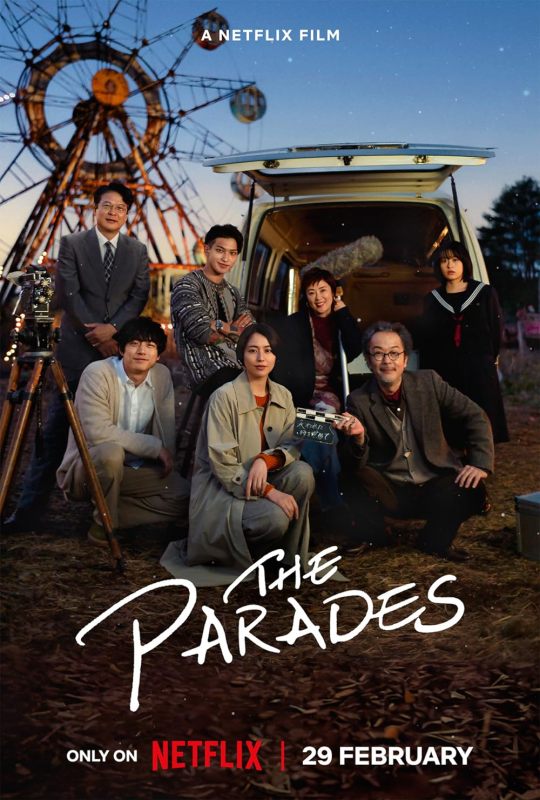
Movies watched in 2024
The Parades (2024, Japan)
Director & Writer: Michihito Fujii
Mini-review:
Wow, what a beautiful film. It's true that there are similar stories out there, but this one is told with such warmness and gentleness that I couldn't help but fall in love with it. If anything, my only complain is that it should have been a miniseries or something like that, cause I wanted to spend more time in this world and with these characters. But truly, this star-studded cast does one hell of a job, even the actors with less scenes or smaller roles. And the cinematography is simply stunning. The whole movie looks gorgeous, to the point of being awe-inspiring, and it has quite a few unforgettable shots. Oh, there are also a couple of triggering moments, so be careful with that. But yeah, I loved The Parades so, so much. I'll have to look up more of this director's work.
#the parades#the parades 2024#the parades movie#michihito fujii#masami nagasawa#nagasawa masami#kentaro sakaguchi#sakaguchi kentaro#ryusei yokohama#yokohama ryusei#nana mori#mori nana#tetsushi tanaka#shinobu terajima#lily franky#akari takaishi#yuina kuroshima#ayumu nakajima#takuya wakabayashi#mai fukugawa#daiken okudaira#japanese movies#japanese movie#drama#fantasy#tearjerker#cinemetography#movies watched in 2024
6 notes
·
View notes




